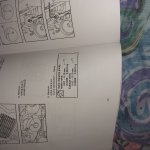I need to check valve clearances on my v star 1100 & have been looking for a feeler gauge set with appropriate blade measurements that will work with measurements noted in the service manual but I can not find a suitable set.
The only way to get the measurements needed is I would have to put two blades together but unsure if this would be the proper way of doing this.
The only way to get the measurements needed is I would have to put two blades together but unsure if this would be the proper way of doing this.

